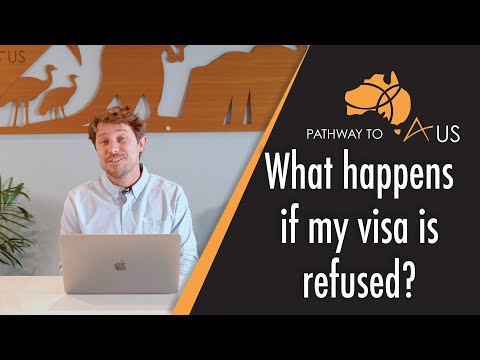What happens if my visa gets refused?
In this video I am going to discuss with you what happens if your visa gets refused. Specifically, this is relating to what happens if your visa is refused when you are inside Australia.
I will discuss:
- The process of appealing the decision
- Your visa status once the visa has been refused
Please note, this advice is general in nature, so please contact a migration agent to run through your specific case.
—
If your visa is refused, you will receive a refusal notice usually through email. This refusal notice will then advise the reasons for the refusal and the timeline you have.
Once you receive the refusal, you can choose to either:
- Accept the decision
- Appeal the decision
If you accept the refusal and don’t want to appeal, your bridging visa that you hold will usually run for another 35 days from time of receiving the refusal. This means you will have 35 days to leave Australia or apply for another visa (if you are eligible to apply for another visa).
Appealing the Decision:
If you disagree with the decision and want to appeal it, this is as option as well. In most circumstances you will usually have 14 days to appeal the decision. Appealing the decision is when you do not agree with immigration’s decision, you think they made an error, and you want to take it to a higher authority. This higher authority is the Administrative Appeal Tribunal.
In order to appeal the decision, you lodge an application for appeal with the AAT through the website. This cost to appeal is $1846, however, if your appeal is successful, you receive 50% of this back Migration and refugee overview
—
Once you have paid the charge and the appeal is lodged, your bridging visa that you held at time of refusal will continue until a decision is finalised. Therefore, if you were on a bridging visa with full work rights, then you have full work rights during the appeal.
This is important, as recently processing times for appeals have blown out. You can check out the Appeals website to see exactly how long you can expect to wait.
In order to be successful at the appeal, you will need to provide documentation addressing why the initial refusal was done in error. You can provide additional documentation, statements, medical information etc.
The AAT member can then choose to either accept your decision without further comment (best case scenario), or you can be provided with a hearing date. During the hearing, you can present the reasons why the initial decision was made in error. You are given the opportunity to explain your situation. The member can ask questions to get better clarity on the situation etc…
The member will then make a decision that either the original case officer did make an error, in which case this application is remitted to immigration who will likely grant the visa. Or the member can affirm the refusal. If this is the case, you really have limited options. In certain circumstances you can choose to fight it further in higher courts or accept the decision.
We have assisted numerous clients take their application to appeal and win. It is really satisfying knowing that immigration did make an error and were held to account for it.
I hope you did find this information helpful. As always, it is general information in nature, feel free to discuss your situation with a registered migration agent.




